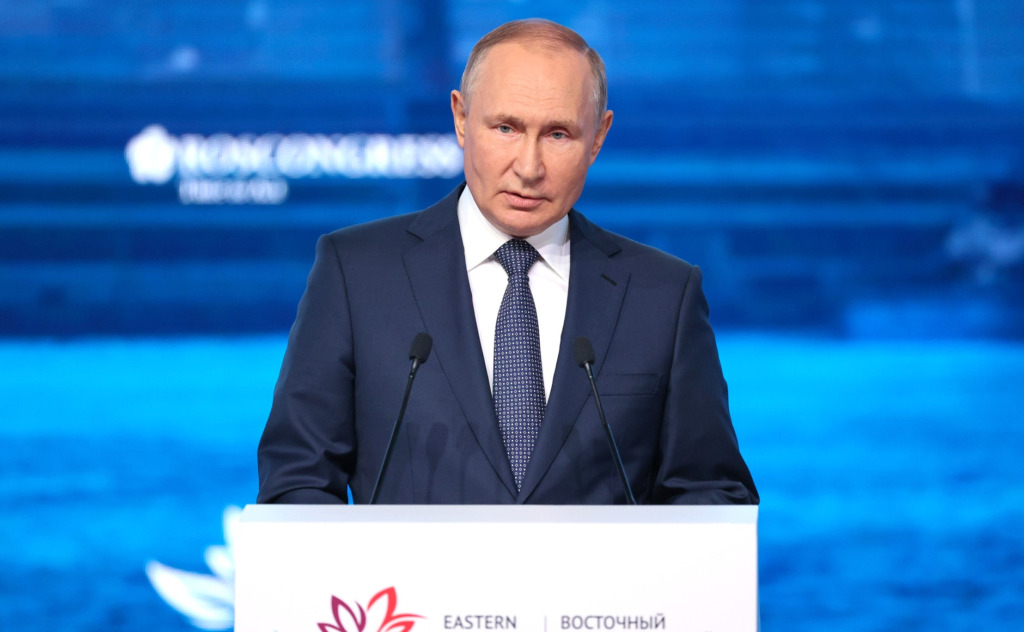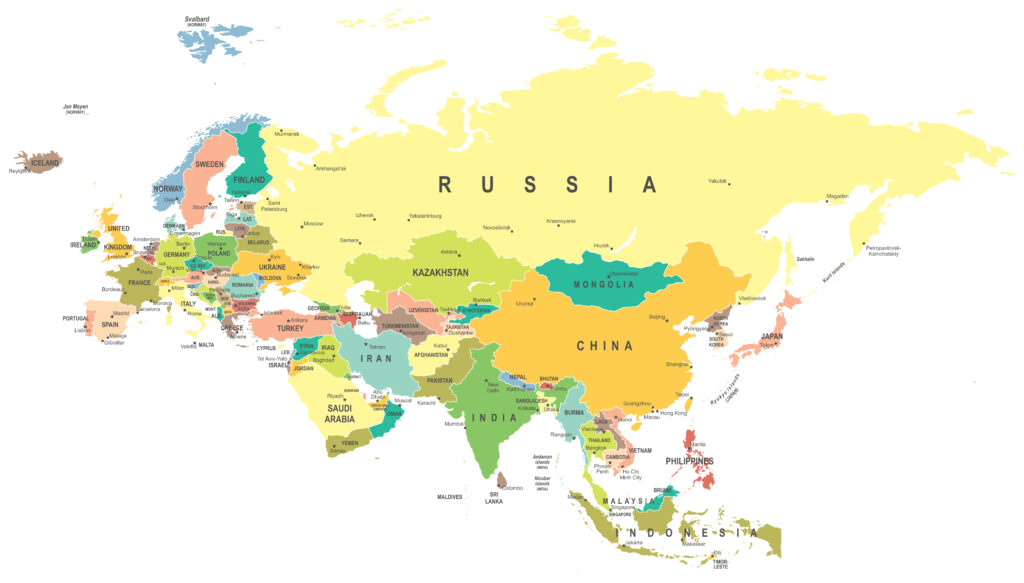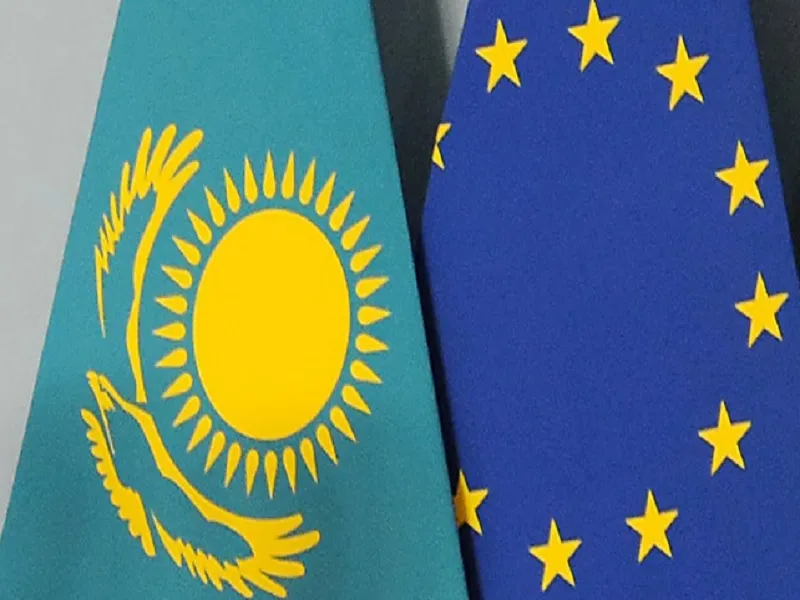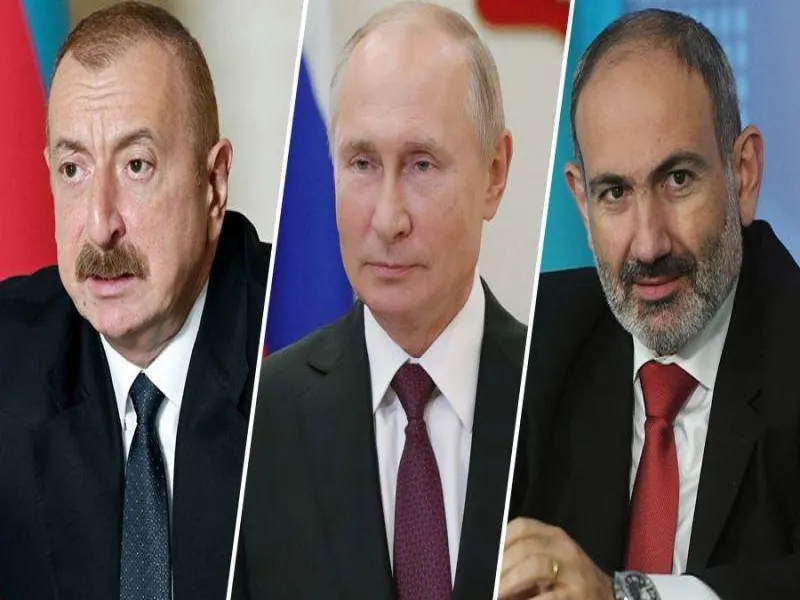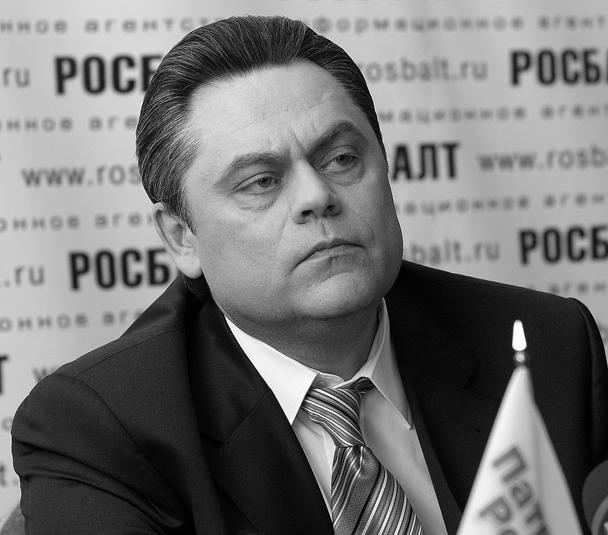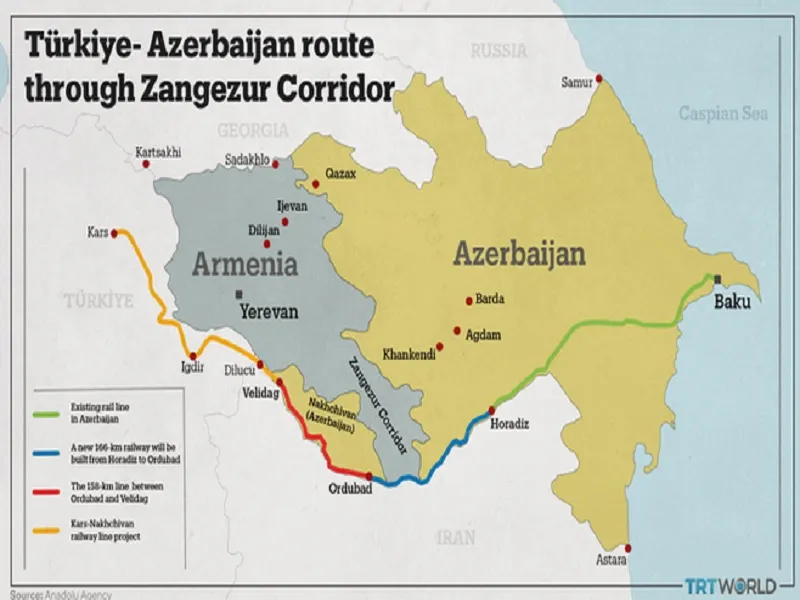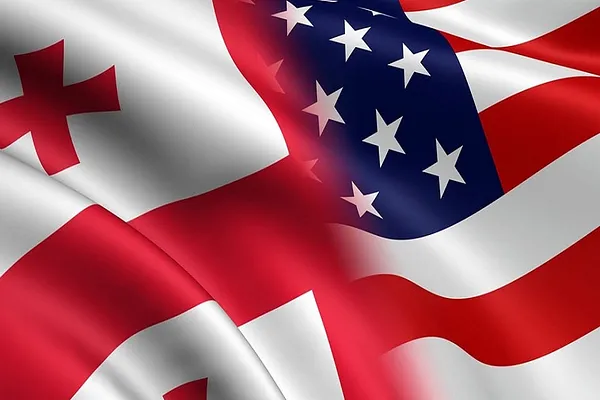KICK START OR KICK OVER — CAN THE US DEFEAT RUSSIA IN THE LITHIUM BATTERY WAR?

By John Helmer, Moscow @bears_with
In January of this year the United States Geological Service (USGS) reported the reserves of the nine leading countries in the world which mine lithium, the new fuel to power electric batteries. Chile led, followed by Australia, Argentina, China, and the US which claims to have one million tonnes. Russia was left out of the USGS chart.
Russian sources report its lithium reserves are currently between 3.5 million and 5 million tonnes; that’s at least three times more than the US. The US is also much more limited in its capacity to develop new domestic lithium mines compared to Russia. Bolivia was also omitted from the US Government chart because its reserves were called unproven resources. In fact and in the ground, Bolivia leads the lithium world with 21 million tonnes.
The difference between what USGS reports and what happens next isn’t the distinction in geologists’ terminology between reserves and resources. It’s US Government policy to stop, sabotage and destroy Russia’s ability to meet its lithium requirement from its own, domestic sources, or by importing from friendly countries like Bolivia.
In response, a new plan for combining lithium mining projects in Bolivia and Russia will produce a surplus of Russia’s foreseeable requirement for lithium battery production. But not only that. Allied in technology sharing, investment, trade, and political agreement, the two countries will protect each other in the conservation of the lithium market. If everything goes according to plan, Russia, Bolivia, and the three BRICS states – Argentina, Brazil and China – will dominate the trade in global lithium. They are already discussing the formation of a collective marketing organisation – a lithium OPEC.
Unless the US can stop them.
In the latest official paper issued by the State Department on July 23, “the bilateral relationship between the United States and Bolivia” is “strained. Despite these challenges, the United States maintains a strong and respectful relationship with the Bolivian people, with whom we work to advance human rights, entrepreneurship, and cultural and educational initiatives…However, the United States remains concerned by anti-democratic actions and the politicization of the legal system.”
This is how the lithium war is starting.
Washington’s version of the world’s lithium table looks like this:
WORLD LITHIUM PRODUCTION AND RESERVES, ACCORDING TO THE US GEOLOGICAL SERVICE

Source: US Geological Survey January 2023
In its footnote to the table, the USGS adds: “identified lithium resources in other countries have been revised to 86 million tons. Identified lithium resources are distributed as follows: Bolivia, 21 million tons; Argentina, 20 million tons; Chile, 11 million tons; Australia, 7.9 million tons; China, 6.8 million tons; Germany, 3.2 million tons; Congo (Kinshasa), 3 million tons; Canada, 2.9 million tons; Mexico, 1.7 million tons; Czechia, 1.3 million tons; Serbia, 1.2 million tons; Russia, 1 million tons; Peru, 880,000 tons; Mali, 840,000 tons; Brazil, 730,000 tons; Zimbabwe, 690,000 tons; Spain, 320,000 tons; Portugal, 270,000 tons; Namibia; 230,000 tons; Ghana, 180,000 tons; Finland, 68,000 tons; Austria, 60,000 tons; and Kazakhstan, 50,000 tons.”
The US is the only country in the table to try to keep secret its production of lithium. “W” in the table, according to the USGS, stands for “withheld to avoid disclosing company proprietary data. — Zero.” In fact, there are at least three publicly listed US lithium miners, and they are required by law to report their lithium results several times each year.
Albemarle Corporation, for example, sells its shares on the New York Stock Exchange on release of quarterly production and financial reports from the company’s lithium projects in the US (Silver Peak, Nevada, and Kings Mountain, North Carolina), and in Australia, Chile, and China. For example, in 2022 the company reports it produced 34,000 tons of lithium carbonate equivalent (LCE); but just 2,000 tons of this aggregate were mined in the US. Because US lithium consumption is so heavily dependent on foreign imports, Albemarle has just announced Pentagon funding for mining equipment to reopen the mothballed Kings Mountain mine in North Carolina. This follows a US Energy Department grant of a year ago to construct a lithium concentration plant at the mine. Altogether, US Government funding to revive Kings Mountain currently exceeds a quarter of a billion dollars.
According to Vygon Consulting, a Moscow analytical company specializing in rare metals, Russia’s reserves are far greater, exceeding Australia, the US, and China on the USGS table, with a cost of production for ore deposits that is lower than the Australian and North American mines, and a brine extraction cost comparable to the South Americans. By 2040, Vygon is projecting annual Russian production of 600,000 tonnes of lithium – a volume which will turn into exports to the global demand market of roughly half the deficit between supply and demand estimated by then.
This means that for Russia, the strategic defence and security requirement for lithium can be met quickly so that import dependence can be ended by 2025. On the other hand, for the longer term in economic war planning against the US and Australia, there is domestic competition for state support of new projects between the established state combines like Rosatom, Gazprom, and Rosneft; the established oligarch miners like Norilsk Nickel and Alrosa; new commercial enterprises; and between regions from Dagestan in the west to Murmansk in the north and Irkutsk and Yakutia in the east.
Confidence in defeating the Americans is an open secret in Moscow; who will benefit domestically between the state companies and the oligarchs is a closed secret because it has yet to be decided.
There has been no lithium mining in Russia since 1997 when mining at the Zavitinsky deposit in Krasnoyarsk stopped. The reason is that there has been no demand at a price for the metal to make mining of proven reserves and develop fresh resources profitable enough. Imports were cheap and supply reliable until 2022. Chile and Argentina then stopped exporting to Russia; several African states halted exports of the raw mineral and required processing plants to be established instead.
Lithium is a rare metal, not because it is scarce but because it is widely distributed at low concentrations in various mineral compounds and salts in the earth’s crust, in seawater, and in oil and gas fields. Because Russia dominates the world in the last of these, its potential capacity for extracting lithium is considerable. Russia’s oil and gas producers have worked this out. So has the US Government.
Low concentration usually means high cost of production. The abrupt surge in price to peak at about $90,000 per tonne in 2022 reflected the dramatic change in international supply, demand and mine profitability calculations. Although the latest investment bank forecasts and stock market projections indicate the price in global trade will continue to decline, the cost of production will remain at a level at which new investment in lithium source extraction will be profitable.
The sanctions war against Russia, both to cut off imports and stop exports, leaves no choice for Russia but to restart domestic lithium deposits; create new ones; protect the security and stability of supply from traditional import sources in South America; and develop new methods for trade and price control to defeat US sanctions.
TRAJECTORY OF THE LITHIUM PRICE, 2018-2023

Source:
https://tradingeconomics.com/commodity/lithium
Converting the Chinese yuan (CNY) price to US dollars, the current value is $23,730. For more analysis of how the lithium market will develop over the next five years, and the impact on nickel and cobalt, in which Russia is already the dominant global supplier, click on this Goldman Sachs forecast for a steady downward trend in the price of lithium and nickel.
In Russian metallurgy, lithium is used to deoxidize and increase the ductility and strength of alloys. In optics it is used to make glasses to protect against ultraviolet rays. In addition, lithium is used in nuclear power engineering to obtain a radioactive isotope of hydrogen, tritium. There are many military industrial applications. By far the biggest civil application for lithium is in the production of lithium-ion batteries for use in electric vehicles and solar panels.
Until last year Russia imported about 9,000 tonnes of lithium (lithium carbonate equivalent, LCE) per annum from Chile, Argentina and Bolivia. Together, their salt flats from which lithium is extracted are known as the lithium triangle.

Note that Bolivia is landlocked and the lowest-cost transportation route for the raw mineral is by rail westward to the Chilean north coast. The Bolivian government is also planning to process lithium and produce lithium batteries in-country with Chinese investment. Source:
https://ubique.americangeo.org/
According to Vygon Consulting of Moscow, about 24% of the world's lithium resources are concentrated in Bolivia, Argentina comes second with 23%, and Chile third with 13%. In the triangle with current extraction technology, cost of lithium production is optimum for western mining company profit calculations. However, Chinese companies are planning to invest in low-cost extraction in Zimbabwe; domestic Russian extraction costs at the oil and gasfields will also be comparatively low.
By 2025 the state nuclear energy conglomerate Rosatom is planning to start extraction and processing of lithium from brines in the crater lake of Pastos Grandes in southwestern Bolivia; by 2027 output will reach planned volume of 27,000 tonnes at an estimated production cost of $4,000 per tonne. The investment outlay for Rosatom, through its Uranium One subsidiary, will be $600 million.
The Russian technology to be used will be a variant of what is known in the west as sorption or direct lithium extraction (DLE).
HOW EXTRACTION OF LITHIUM WORKS

Source:
https://www.goldmansachs.com/
Rosatom needs the lithium to produce automobile batteries at a plant being built now in Kaliningrad. This factory will start rolling out 50,000 electric vehicles per year by the end of 2025. Russian sources estimate the plant will consume about 360 tonnes of LCE annually. In planning for this project “an important factor is that the leftwing Bolivian government looks like a more reliable partner in the circumstances, so the choice of Bolivia to launch a lithium mining project seems logical,” says Igor Chausov, an analyst with the Center for Power-Engineering Systems of the Future, Energinet. “Lithium delivery will be carried out, apparently, first by rail through Chile, then by sea.”
An alternative to salt flat brine extraction is hard rock mining. This not only means reviving mothballed mines like Kings Mountain in North Carolina and Zavatinsky in Krasnoyarsk. It also means opening new hardrock deposits like Kolmozerskoye in the Murmansk region. Russian sources currently believe this holds the largest volume of undeveloped reserves in the country; it has been under consideration for several years, but the lithium price takeoff and the war have accelerated planning. A partnership has been announced between Rosatom and Norilsk Nickel, owned by Vladimir Potanin, to accelerate the project.
According to Vasily Danilov, an analyst at Veles Capital, the target date for first output has been 2030. “Given the significant financial and expert resources of Norilsk Nickel, the start of commercial lithium production may begin earlier.” Click to read the Rosatom summary of February 2023.
In Dagestan, the local government is lobbying for federal budget support to start mining of three large lithium deposits and the construction of processing facilities. According to Alibek Alkhasov, director of the Institute of Geothermal and Renewable Energy Problems, a branch of the Joint Institute of High Temperatures of the Russian Academy of Sciences, the Institute has studied 92 deposits with industrial lithium content in the North Caucasus over the past 40 years, 55 of which are located in Dagestan. “The Berikeyskoye, Yuzhno-Sukhokumskoye and Tarumovskoye deposits make it possible not only to fully meet Russia’s needs for lithium carbonate, but also to export it to other countries,” Alkhasov has said.
A current and comprehensive map of Russian lithium deposits is not available. The British Geological Survey map for the world omitted Russia entirely. A much earlier global review of 2012 identified the Kolmozerskoye hardrock deposit in Murmansk and brine deposits in southeastern Siberia.

Click on source to enlarge detail and read the key to each identified deposit.

Source:
https://www.researchgate.net
The federal Ministry of Industry and Trade has announced its support for the revival of the Zavitinsky deposit in Krasnoyarsk, but this will be limited to recovery of lithium from the old mine’s waste dumps. Production will materialise quite quickly.
Also relatively swift will be the extraction of lithium from brines in Gazprom’s Kovykta gasfields in Irkutsk. Since 2021 Gazprom has been working on a single experimental well; Moscow sources say production there will start in 2025, possibly sooner. Other oil and gasfield sources currently being prospected for lithium projects include the Lena-Tunguska area in the Ural-Volga region and in the North Caucasus. Rosneft, Gazpromneft, LUKOIL and Tatneft are the established producing companies there.
Also bidding for state budget and financing from Gazprom and Rosneft are other regions of eastern Siberia, both for brine extraction and for concentration plants. Soviet geologists identified prospective sources of lithium a generation ago, but the international lithium price, cost of production, and commercial profitability calculations stopped development until now, regional experts say. The US war against both Russia and China, as well as regime change plotting against Bolivia, have transformed the strategic thinking across Russia, and opened for the first time the possibility (and profitability) of Russia as a major lithium exporter to defeat the hostile state alliance.
It is currently estimated that by 2030 that the hardrock sources of lithium in Russia will be producing 68,000 tonnes of LCE annually, roughly three times more than the estimated domestic demand requirement. The output capacity of the brine extraction sources is much greater – by 2030, 56,000 tonnes per annum; by 2035, 206,000 tonnes.
According to a commentary published in Vzglyad last week, “the growth of the share of electric vehicles, the emergence of electric airplanes and electric-powered ships will change transport around the world. And if today Russia’s international influence is partly based on its role in OPEC+ as one of the leading oil exporters, then in the future we can think about a comparable role in the economy of tomorrow – the economy ‘with lithium blood’… In these conditions, the winners will be those in whose hands the most effective technologies will be. Effective both from the point of view of direct costs and from the point of view of the environment, which minimizes indirect costs allocated for environmental protection measures.”
“Russian companies have unique advantages which can be implemented in the production of lithium. If we talk about the distant future, it is worth paying attention to the recent statement of several Latin American countries about the desire to create a lithium OPEC to reduce market volatility. An example of the classic OPEC+ is in front of their eyes. At some point, this will move on to practical plane. Steps are being taken now so that in time Russia can enter this new international cartel as one of the leading countries.”
NOTE: Because of the war conditions, no Russian source agreed to respond directly to questions.
https://johnhelmer.net/kick-start-or-ki ... more-88601
*******
Korybko To Vladislav Surkov: Russia Won’t Ally With The Great North Against The Global South
ANDREW KORYBKO
SEP 29, 2023
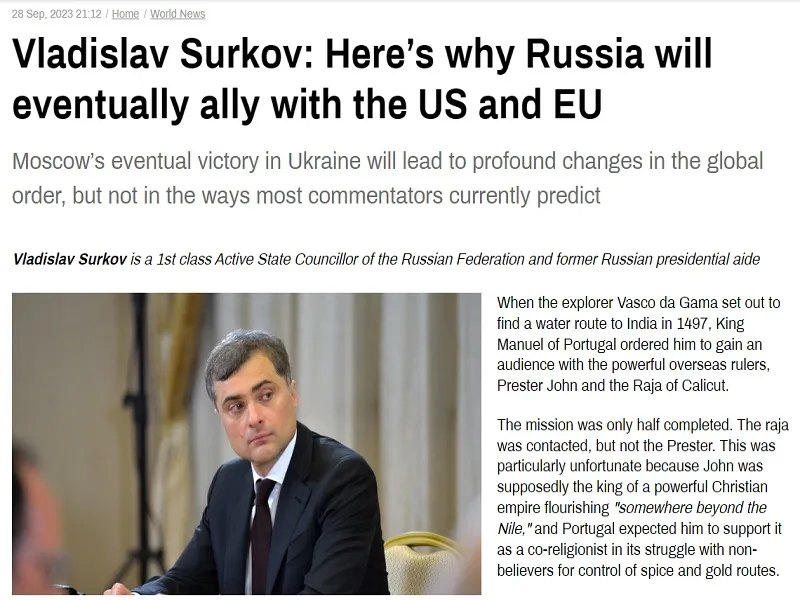
His prediction of Russia allying with the US and EU to create a so-called “Great North” is based solely on their shared civilizational heritage and particularly their Christian roots, but neither are as solid or eternal as he presents them as being.
Former Kremlin “grey cardinal” Vladislav Surkov abruptly returned to the fore of global media attention following his de facto retirement from public life these past few years after RT translated his latest article and republished it on the front page of their website. Originally titled “The Birth of the North”, Russia’s top publicly financed international media flagship decided to promote it on their platform under the title “Here’s why Russia will eventually ally with the US and EU”.
The vast majority of it is just Surkov waxing poetically about times past to make the point that the Collective West has historically operated under various delusions to the detriment of its real interests. It’s implied that the latest example thereof is their view that Russia is an enemy, which he believes will be dispelled. Upon that happening, “There will be the Great North – Russia, the United States, and Western Europe – forming a common socio-cultural space. A tripartite northern geopolitical cluster.”
This formerly influential official clarified that it likely won’t happen in anyone’s lifetime, but he insists that it’ll nevertheless inevitably unfold. Surkov doesn’t detail how this scenario will come about, however, instead choosing to predict its general contours. According to him, “The Great North is neither utopia nor dystopia; it will be neither an idyll nor a dystopia. It will be full of contradictions – yet obsessed with the unifying idea of collective leadership.”
He then adds that “The three major northern civilizations, Russian, Western European, and American, draw inspiration for their political development from the image of the Pax Romana. The word of the Elder Philotheus of Pskov still guides Russia. The European Union has proclaimed Charlemagne, the 'Emperor of the Romans', as its forefather. Washington's most famous hill is named after the legendary Capitol.”
Surkov ended his article on a prophetic note: “The source code of these three metacultures is embedded in the Iliad and the Gospel. Their kinship is obvious. Our victory will change us as well as the so-called West. It will be a new step towards the integration of the Great North, where our country will act as a co-leader of the global triumvirate. The evil of this day will be replaced by creation. And that will be the merit not so much of the politicians of the future, but of Homer and St. Mark.”
With all due respect to him, both personally because of his important behind-the-scenes contributions to the formation of Russia’s modern political system but also regarding his right to express whatever views he wants, everything that he wrote is just a far-fetched fantasy. Furthermore, it’s directly at odds with the grand strategic goals that his country is officially working towards as enshrined in its latest Foreign Policy Concept that can be read in full here, which was approved by President Putin.
Of relevance to the present piece is Russia’s self-description as a unique “country-civilization” that’s prioritizing ties with the collection of non-Western countries popularly known as the Global South. China and India, not the US and the EU, are described as two of its closest partners. The document also mentions how Russia will expand ties with them and others, namely through multipolar organizations like BRICS, the SCO, and their RIC core and via the development trans-Eurasian connectivity corridors.
This analysis here from earlier in the year argues that the ongoing global systemic transition to multipolarity has led to the trifurcation of International Relations into the US-led West’s Golden Billion, the Sino-Russo Entente, and the informally Indian-led Global South. Amidst this complex process, the Russian-Indian interplay that was elaborated on here keeps bi-multipolarity trends in check, thus preemptively averting the potential bifurcation of the world system into a jointly led Sino-US order.
The average reader might not be too interested in the academic-strategic nuances of the aforementioned concepts, which is why it’s sufficient for them in this context to only be aware of the larger dynamics at play regarding the evolving world order. In simple terms, the West crossed so many of Russia’s red lines that any meaningful rapprochement between them aimed at restoring the status quo ante bellum prior to the onset of the latter’s special operation is impossible.
There’s no credible indication that either party has any intent to waste their time pursuing that pipe dream, with each instead accelerating their respective efforts to “decouple” from the other. To that end, the US has successfully reasserted its previously declining hegemony over Europe in parallel with Russia moving full speed ahead with several trans-Eurasian connectivity corridors to China and India. Considering these objectively existing facts, Surkov’s article is veritably a piece of political fantasy.
His prediction of Russia allying with the US and EU to create a so-called “Great North” is based solely on their shared civilizational heritage and particularly their Christian roots, but neither are as solid or eternal as he presents them as being. For instance, the West’s liberal-globalist elite are actively imposing secularism onto their society at the same time as artificially reshaping its traditional ethno-national demographics by creating and then importing “Weapons of Mass Migration” from the Global South.
Readers can learn more about these interconnected processes by reviewing this two-part article series from 2016 about “Civilizational Aggression: Non-Western Revival And Leftist Rebranding” here and here as well as these three more recent pieces about liberal-globalism here, here, and here. As for Russia, while it proudly remains a majority-Christian country-civilization, its grand mufti predicted in 2019 that the population will be one-third Muslim by the early 2030s.
This trend was analyzed here at the time and adds crucial context to what was subsequently described as Russia’s “Ummah Pivot” towards majority-Muslim countries that was undertaken in recent years, which readers can learn more about in this three-part series here, here, and here and in this piece here. The preceding ten hyperlinked analyses show that the West and Russia are rapidly proceeding along separate geo-economic, demographic, and strategic trajectories that’ll likely soon prove irreversible.
Accordingly, the shared civilizational and particularly Christian basis upon which Surkov expects that Russia will eventually ally with the US and EU is exposed as specious, thus discrediting his prediction. Observers might therefore wonder why RT chose to translate and republish his piece, especially since its gist contradicts Russia’s officially enshrined foreign policy concept. While their editorial decision can’t be known for sure, everyone would do well to remember that publicly financed doesn’t mean “state-run”.
Two recent examples proving this point can be seen from Sputnik and RT’s critical articles about the India-Middle East-Europe Economic Corridor (IMEC), which were published in spite of President Putin praising that project during his latest appearance at the Eastern Economic Forum (EEF). Despite being publicly financed, they have no qualms about sharing opinions that don’t always align with their patron’s. This policy is probably meant to demonstrate editorial independence and generate discussions.
In any case, it would be a mistake for anyone to read too deeply into RT’s promotion of Surkov’s latest article such as by wildly interpreting it as supposedly reflecting a secret shift in Russian grand strategy. Nothing could be further from the truth since this unique country-civilization will continue along its present trajectories to further integrate itself into the Global South. Russia will never ally with the “Great North” against the majority of humanity, and it’s surprising that Surkov thinks the exact opposite.
https://korybko.substack.com/p/korybko- ... kov-russia
I do to some degree agree with the "shared civilization' idea and do not consider Russia a separate civilization from the West, a great and vibrant culture though it is. War propaganda and the ancient schism of Christianity motivate this concept. It will go away. Regardless, 300 years of shared history and the shade of Peter the Great ain't enough to surmount the real politic necessities of Russia's turn East nor it's integration with the South. Western colonialism and historical ties established by the Soviet Union assure that.
******
What is happening to the Moldovan economy?
September 28, 2023
Rybar
For almost a year and a half, we have been actively monitoring the situation in Moldova and Transnistria, from military exercises and escalation on the border with Ukraine, to socio-political events and the economic crisis.
The rapid integration of Moldova into NATO defense plans, the transfer of all key assets in the country to the control of officials from the US and the EU, the constantly deteriorating standard of living of the population, as well as pressure on Gagauzia and Transnistria are forming a bundle of tension, which in the future will turn into another regional crisis. And, in comparison with the events in Armenia, which are being used to push Russia and our peacekeeping contingent out of Transcaucasia, something similar (albeit by different methods) is being implemented right before our eyes in Moldova.
In this regard, we decided to record in a moment what the economy of Moldova is, what main trends in its degradation can be identified, and what this will lead to in the foreseeable future.
Population decline
Over the past few years, Moldova has experienced a series of socio-economic and political upheavals. Today there are about 2.5 million people in the country, 1/5 of whom live in Chisinau, the capital of the state. Over the past ten years, the population has decreased by 12%, mainly due to migration to the West and Russia. About 26% of the population are young people aged 14 to 34, but youth unemployment is at 25% due to the low number of jobs.
Moldova has a mild climate and fertile chernozem soils (about 80% of the territory), so the country's economy is focused on agriculture , with about 46% of the population employed in this area .
The economy of Moldova is formed by: the service sector - 31.9%, trade - 19.1%, industry - 17.4%, agriculture - 11.8%, transport - 10.7%, construction - 9.1.
However, Moldova is one of the poorest countries in Europe. According to the latest data from the Moldovan government, the absolute poverty rate in the country is about 12% .

Who is investing in Moldova?
Since the collapse of the USSR, Russia has been one of the largest investors in the economy of Moldova, investing more than $800 million in the energy, winemaking and processing sectors. The migration problem between the countries is acute, since about half a million Moldovan citizens are on Russian territory, but only half (about 210 thousand) are employed legally. Russia also leads in the volume of remittances to Moldova - about $400 million per year.
In the energy sector, the republic is highly dependent on foreign sources, importing approximately 98% of energy resources , which is why the overconsumption of energy per unit of GDP is 3-4 times higher than in many other countries. The Moldovan National Energy Regulatory Agency (NARE) sets the retail price of fuel in the country on a daily basis.
The country experienced an energy crisis in 2022, with fuel costs rising by more than 50%. The rise in energy prices was largely due to supply problems from Russia. The Moldavian market is quite small, so the disruption of supplies to Europe had a devastating effect on the country's economy.
In 2022, Moldova's natural gas imports from the EU increased tenfold. If in 2021 Moldova bought European gas for $14 million, then in 2022 imports reached $122 million . A similar situation has developed in the oil industry: in 2022, fuel imports tripled and reached $1.142 billion. In 2022, Moldova also began importing electricity from the EU for the first time, which is due to disruptions in electricity supplies from Ukraine. At the same time, imports of European coal and coke increased by one and a half times, the total supplies of these goods exceeded $1.5 million.
On the contrary, the volume of trade with the CIS countries in 2022 decreased. Thus, supplies of petroleum products have decreased by half, but supplies of natural gas continue to grow and reached $715 million last year. At the same time, the export of petroleum products from Moldova itself to the CIS countries has increased significantly: in 2022 it grew 55 times and reached $550 million.
The energy factor became the key reason for the growth of the industrial production price index. The growth of the industrial sector in 2022 was about 26.7% , with most of the growth coming from energy-intensive industries, where energy is directly included in the price structure: production of vegetable and animal oils and fats (39% increase in cost), production of bakery and flour products (30%), sugar production (33.6%), mining (28%). The absolute leader was the energy supply sector: transmission and distribution of electricity ( growth by 146.4% ), power generation ( 147.3% ), air conditioning ( 76% ).

Steps by European partners to establish control over Moldova’s infrastructure
The free port of Giurgiulesti is of particular value to Western partners . Considering that Moldova is landlocked, this port is the main logistics hub for both all goods and smuggling flows in the transit chain from Asia to the EU, of which Moldova is a link.
Since the 90s, the port has been the subject of increased interest by regional criminal structures. In 2004, the companies Azertrans SRL, Azpetrol SRL and Azpetrol Refinery SRL, owned by the Azerbaijani group Azpetrol of entrepreneur Rafik Aliyev, became its owners. But after a serieslawsuits, arrests and proceedings in May 2021, the EBRD became the owner. Taking into account the encumbrances of the asset, the transaction amount was only 1000 Euros. Obviously, the injured party in this case is the state of Moldova, which received less sales taxes and related duties. By the way, a piquant detail has emerged that the EBRD has not operated in Cyprus (where the company that owns the port is registered) since 2020. However, in the Cyprus Chamber of Commerce, a change of shareholder somehow miraculously occurred on May 7, 2021.
This deal is key to establishing control over all business and commodity flows in Moldova. Control of the port makes the entire logistics system of the state dependent on European shareholders.
Development of the railway network of Moldova according to NATO standards
The logic of the development of Moldova’s railway network is currently dictated solely by the need for the transit of military cargo to the territory of Ukraine, the export of Ukrainian grain, minerals and material assets from the territory of Ukraine, as well as smuggling flows. Drugs are supplied to the EU, and sanctioned goods and cars are sent in the opposite direction.
Based solely on these needs, a plan for the modernization of Moldova’s railway communications is being developed. The absence of a large container fleet, worn-out rolling stock, and lack of investment in the modernization of railway tracks and infrastructure are considered by European partners as an excellent opportunity to cut up EU budget funds and IMF financial assistance. In fact, the ECB can print unbacked euros, which will not go directly into the EU financial system, but will be used for modernizationrailway infrastructure of Moldova. For unsecured money it will be possible to purchase real assets. In a similar way, it will be possible to “master” financial assistance from the IMF. This is extremely beneficial for both the ECB and the Fed, because in this way it becomes possible to dissolve part of the unsecured issue outside their financial systems. In this case, an increase in the money supply will have minimal impact on inflation processes.
The EBRD is consistently working in this direction . The first tranche of 43 million euros has already been allocated. Of this amount, €23 million is a loan from the EBRD and €20 million is a grant from the European Commission as part of the European Solidarity Routes initiative to facilitate the transport of goods to Ukraine and the EU . It is planned to use the allocated funds to restore a section of the railway on the transport corridor to the port of Reni. The corresponding memorandum of cooperation was signed by representatives of the Ukrainian Railways (UZ) and the Railways of Moldova. As part of the partnership, the railway corridor Valchinets - Ocnita - Balti - Ungheni - Chisinau - Cainari will be restored. Its length is 400 km.
Why has gas become more expensive?
Since March 2023, the Moldovagaz company again began purchasing Russian gas , after which prices on the domestic market began to fall, but a real economic effect should not be expected until the end of the year. Interestingly, against the backdrop of a stop in Russian gas supplies, the total volumes of supplies in winter decreased by 2 times . This suggests that the country has reached the price limit of consumption, after which it began to simply stop its production.
Immediately after the resumption of Russian gas supplies, the tariff for the population was reduced by 38%. This contributed to a slight increase in consumption. The volume of natural gas consumption in August amounted to 16.5 million cubic meters, which is 36.6% lower than the same period for 2022.
After last year's price surge, real energy prices are at prohibitively high levels , and their consumption has fallen significantly throughout the year. For example, consumption in June 2023 is 42.8% lower than last year. The situation is aggravated by the debt of Moldovagaz to Gazprom, which amounts to about $750 million. Recently, the Moldovan government announced its readiness to pay only a small amount - $8.6 million.
Between December 2022 and March 2023, the gas needed for Moldova was supplied by Energocom instead of Gazprom. The average price in December 2022 reached $1,094.44 per thousand cubic meters, while Gazprom's prices during that period amounted to $785. Thus, gas from alternative sources for Moldova has become on average almost 40% more expensive .
A similar situation is observed now. For example, in March 2023, the cost of Gazprom gas for Moldova was $1011.73, in February - $1054. This price level is determined by the formula in the contract, which was concluded in 2021 for 5 years. At the same time, two years ago Moldova purchased gas from Russia at a price of $450 . In the winter period, a formula is used for the country based on the situation on the diesel fuel and fuel oil market, and in the warm season (from April to October) the spot component is taken into account more, taking into account the conditions of the German NCG gas hub.
From December 4, 2022, Moldovagaz purchased natural gas from two sources. The company buys 3.5 million cubic meters of gas from Enegrocom, which comes from Romania and from southern Europe through the Trans-Balkan gas pipeline. This gas is supplied to consumers on the right bank of the river. Dniester. Moldovagaz transfers 5.7 cubic meters of gas received from Gazprom to Tiraspoltransgaz in Transnistria to generate electricity at the Moldavskaya State District Power Plant (owned by Inter RAO). The agreement with Transnistria made it possible to sign a new contract for the transfer of electricity from the unrecognized republic, which will satisfy most of Moldova's needs and significantly reduce the need to purchase expensive electricity from Romania. According to the new agreement, the price of 1 MW of energy from Transnistria is €73.
The first delivery of gas to Moldova via the Trans-Balkan route has implications for all countries along the pipeline, which until 2020 was used to export Russian gas from north to south through Ukraine, Moldova and Romania to Bulgaria, Greece, the Western Balkans and Turkey. The launch of the reverse required a number of agreements between all entities and transit countries, as well as additional political adjustments. In particular, it was important that the principles of EU law were respected not only by Ukraine, but also by Moldova.
Moldovan officials say the country does not buy gas from Gazprom, but the Russian company remains an important player in the country's energy sector. A significant part of the electricity in Moldova is produced by the Kuchurgan Power Plant (KES), which is located in Transnistria and runs on Gazprom gas. Gazprom gas, which Moldova no longer imports, is redirected to Transnistria and then delivered back to the republic at a price of $73 dollars per MW .
Due to the explosive growth in energy prices, rapid inflation began in the country: in 2022, the consumer price index grew by 30.2% . In 2023, prices also continue to rise: for example, since the beginning of the year, hot water tariffs have increased by 117%, and central heating prices have jumped by 122%. However, energy problems in 2023 do not have such a strong impact on the overall increase in prices for other categories of goods: the only exception is imported fruits, which increased in price by 50% . The budget for the current year was drawn up with the assumption that inflation would not exceed 15.7%, but it is now clear that achieving such figures will be almost impossible. According to forecasts, Moldova's GDP may decline by 3% in 2023.
The government is already preparing for 2024 and has approved a budget forecast for the medium term. (Expand to read more)

Protests by Moldovan farmers
However, the figures presented in it are more likely a figment of the imagination of politicians rather than a real economic forecast. Against the backdrop of energy prices, real economic growth is offset by high inflation rates.
Moldovan Laundromat and the shadow economy
The current crisis is aggravated by the high level of corruption and a developed shadow economy in Moldova. The scale of the problem is illustrated by the relatively recent state-level money laundering scandal.
This is a unique phenomenon when, for the illegal withdrawal of funds, it was not gray schemes that were used, but the law enforcement and financial systems of the state. The participants in the scheme were banks from the Russian Federation, Moldova, Latvia and the UK.
Very simply, the scheme was that after the signing of international contracts between legal entities from the Russian Federation and Moldova, the contracts were terminated, and according to the conditions specified in them, the Moldovan side demanded payment of a penalty through the court. Further, on the basis of a court decision, funds from the Russian Federation were transferred to the accounts of Moldovan banks, and then to London through the Baltic states. The presence of a court decision from another jurisdiction made it possible to bypass currency controls in the Russian Federation. Obtaining fictitious court decisions was put on stream.
According to the investigation materials , from June 2013 to the end of 2014, the owner of the Moldovan bank BC Moldindconbank SA, Vyacheslav Platon, together with the first vice-chairman and de facto leader of the Democratic Party of Moldova, Vladimir Plahotniuc, developed a mechanism for withdrawing money from the Russian Federation. The famous Moldovan businessman and politician Renato Usatii also took part in the scheme. A number of bankers and lawyers were brought in from the Russian side. In collaboration with BC Moldindconbank SA Treasury Director Elena Platon, they used fictitious currency control documents to ensure the daily transfer of hundreds of millions of dollars and euros to bank accounts – BC Moldindconbank SA
Vladimir Plahotniuc, Veaceslav Platon and Renato Usatyi were put on the international wanted list as a result of the investigation and were forced to leave Moldova.
Ultimately, the withdrawn funds, the amount of which, according to various sources, exceeds $20 billion, ended up in accounts in banks in the UK and other Anglo-Saxon jurisdictions, and most of them, quite unexpectedly, were blocked as being of criminal origin.
The main result of the Laundromat’s work was the strengthening of Vladimir Plahotniuc’s position in Moldova. His people are still in key positions in the government system, controlling the main flows of smuggling and shadow business. Despite the accusations from the “democratic community” that Plahotniuc was working for Moscow, it is obvious that at that time his group was quite independent in its activities. Huge financial resources made it possible to play for big with the involvement of both local crime and international criminal groups. According to the investigation, no later than 2012, Vladimir Plahotniuc became one of the leaders of a criminal transnational drug syndicate. More than 60 of its members, including citizens of Spain and North Africa, were brought to justice. The supply of more than 1 ton of hashish from Morocco to the Russian Federation was stopped.
Current position of Western partners on Moldova
Naturally, the shadow operations of local “gangsters” were no secret to either MI6 or the CIA. And after Plahotniuc’s group created very serious problems for itself in the Russian legal field, it was decided to seize control of such a valuable asset as Moldova, packaging it in the iris of European values. Maia Sandu, in fact, is just a decoration for European integration and a lightning rod for the negativity of the population, while Western intelligence services are actively working to seize control of smuggling and drug trafficking channels and introduce their own people into the system. Smuggling of cigarettes, alcohol, cars and drugs brings, according to estimates , the leaders of Moldova’s security bloc more than $500,000 a day.
A separate additional item of their income is “services” for escorting NATO military cargo from Romania to Ukraine.

Prime Minister Dorin Recan and Supreme Allied Commander Europe General Christopher Cavoli
From the above data it is clear that no one in the US, UK, or EU has planned or plans to “save” the population of Moldova and integrate it with the “European family.” We can only talk about the absorption of the country by neighboring Romania and its use as a military springboard and a “black hole” for shadow business, similar to the remnants of Ukraine. The presence of such shadow enclaves will be in great demand in the near future against the backdrop of the introduction of total digital control in the EU.
What will happen to the economy next?
Perhaps the best the Moldovan government can hope for is concluding long-term supply contracts with Gazprom at much lower prices, but the question of repaying the existing debt to the company remains open.
Infrastructure problems complicate the situation: over the years of independence, railways have not been modernized, rolling stock has not been updated, road construction has not been carried out, and there is also a lack of infrastructure investments. In 2022, the construction work index decreased by 15.1% and investments in repair work of existing infrastructure fell by 29%. The government has so far only promised to rectify the situation with the help of EU creditors.
Despite the difficult economic situation, Maia Sandu speaks on the platforms of Western media and organizations about positive trends in the development of Moldova. At the same time, a consistent anti-Russian course provides Sandu’s team with multi-billion dollar Western aid, which, however, can only keep the state afloat, but not ensure its economic development. In addition, Western subsidies only strengthen the corruption schemes of the new Moldovan government.
In the long term, Moldova’s relations with Western countries are similar to the creation of credit bondage for years to come, which threatens a complete loss of sovereignty. In this case, customers do not even need to resort to complex schemes that were used in Armenia or Ukraine . The office of the president and the government hand over everything themselves. Already, the authorities do not control the strategic assets of the state, which are transferred for next to nothing to companies affiliated with the Romanian government or globalist organizations, especially the EBRD.
Together with the political and cultural course towards Romanianization, in the future Moldova may be absorbed by Romania through accession to the EU. Since the economic depression is squeezing the active population out of the country, hardly anyone will be able to defend the sovereignty and identity of Moldovans. Russian-speaking Transnistria is also under the threat of Romanianization, which the pro-Western authorities in Chisinau already intend to “reintegrate” unilaterally.
https://rybar.ru/respublika-moldova/
Google Translator
*******















